Above is the nameplate of the original Scotsman newspaper, taken from its very first edition published on 25 January 1817. It's a publication that we are all very familiar with. A lesser known fact is that it was all started by a man born in 1781 in Lundin Mill. Initially a weekly newspaper, it was launched by William Ritchie and Charles MacLaren. Born out of frustration with, and as an alternative to, the existing papers, The Scotsman set out to offer impartiality, independence from the establishment and to stand against privilege and corruption.
William Ritchie (pictured in the portrait below) was the son of a flax dresser named James Ritchie, who had moved from Kirkcaldy to Lundin Mill shortly before William's birth. Following a childhood in Lundin Mill, William moved to Edinburgh aged 19 and became a solicitor. In addition, from the age of 17, William had written short pieces for various publications including the Scots Magazine. In Edinburgh he was a member of 3 different debating societies where he displayed characteristics of "nerve, directness and simplicity, facility of elocution, great promptitude of thought, frequent appeals to general principles, and an ardour, which sometimes rose to transient bursts of passion."
The date of the first edition was deliberately chosen as 25 January as it was the anniversary of Rabbie Burns birth (Burns being another champion of free speech). The thistle was chosen for the masthead as this was Burns's "emblem dear" of Scotland. The No. 1 edition was produced at 347 High Street in Edinburgh, opposite St Giles cathedral, in a building that still stands today. The leading articles in the inaugural edition of the paper were from Ritchie's pen. (Source: The Scotsman centenary supplement 25 January 1917)
William wrote over a thousand articles on a wide range of subjects but his contribution would be cut short by illness followed by death at the age of 49. Co-editor MacLaren said of William in a piece written for the paper following his death that "no great question affecting any vital interest of the country, or of humanity at large, has arisen, into the discussion of which he did not enter with the talent of an able, and the zeal of an honest man, whose one and only object was to repress injustice and abuse, to maintain the liberties, and promote the moral and intellectual improvement of the people".
Although a city dweller for most of his life, Ritchie greatly appreciated the rural landscape, as MacLaren also remarked "I never knew an individual who loved the beauties of nature with so intense a feeling. Fine scenery operated on him like an enchantment". Ritchie was also a philanthropist who took a particular interest in improving the police system in Edinburgh and who campaigned for the reform of prison conditions. He took a particular interest in debtors prisons. The piece below from the 25 Jan 1917 Scotsman helps to explain why this was an issue that he felt strongly about.
William wrote his final piece for The Scotsman on 23 October 1830 (on Belgian affairs) before illness took hold. On 4 February 1831, aged just 49, Ritchie died at his home in Edinburgh's George Square. After his death, newspaper partner Charles MacLaren also said of William:
"He possessed in the highest moral and physical courage, and while immersed in the common cares and business of life, he retained an elevation of sentiment worthy of a hero of romance, united with the purity, delicacy, and gentleness, which is rarely found".
Ritchie was buried in Greyfriar's Kirkyard in Edinburgh and is commemorated on the Ritchie Findlay family memorial in Dean Cemetery. Upon William's death, his elder brother John Ritchie stepped up his involvement in The Scotsman - giving up his drapery business and eventually buying out the other shareholders to become sole proprietor. It was he who turned the paper into a daily in 1855. John lived until 1870 reaching the age of 92. His great-nephew John Ritchie Findlay (who had been working alongside him at the paper for some time) took over The Scotsman when John Ritchie died. He continued at the helm for many years before he himself died in 1898. In turn his son (Sir John Ritchie Findlay who lived until 1930) and grandson (Edmund Findlay) followed him as proprietors of the paper.
The family legacy of Lundin Mill born William Ritchie continued for almost a century and a half until Edmund sold the paper in 1953 to Canadian Roy Thomson (although even then a younger Findlay brother remained on the Board of Directors of the paper). William Ritchie (shown in a silhouette portrait by August Edouart below) was a man of humble beginnings, a man that was neither particularly rich nor powerful but who succeeded largely due to his firm sense of purpose. It is remarkable that the enterprise he started over 200 years ago continues to this day.
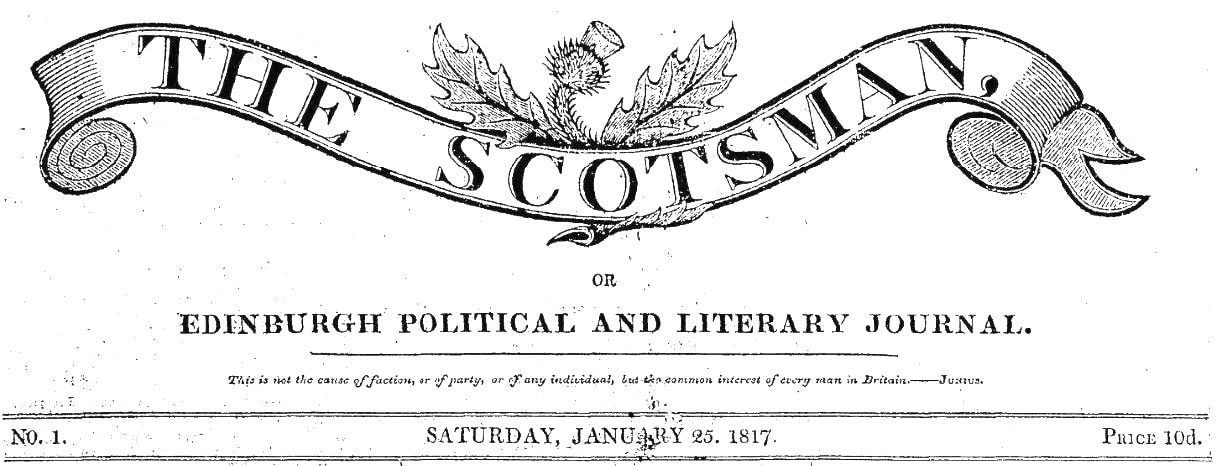
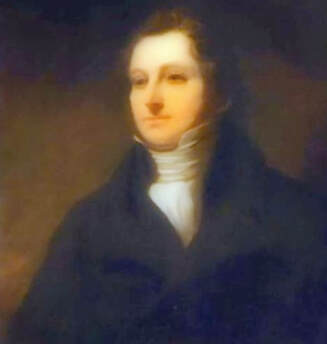
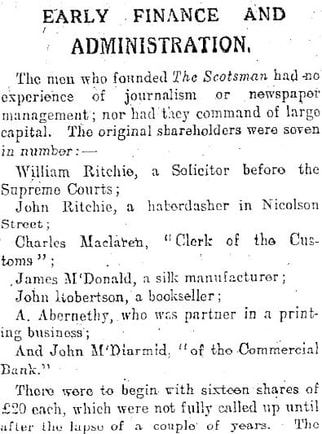
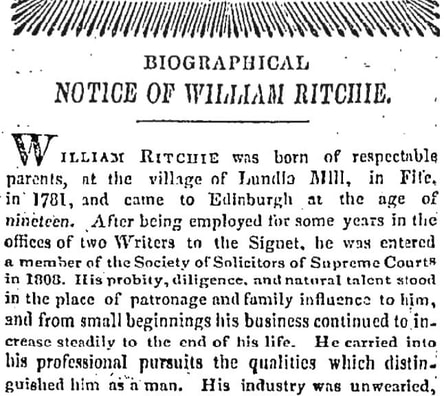
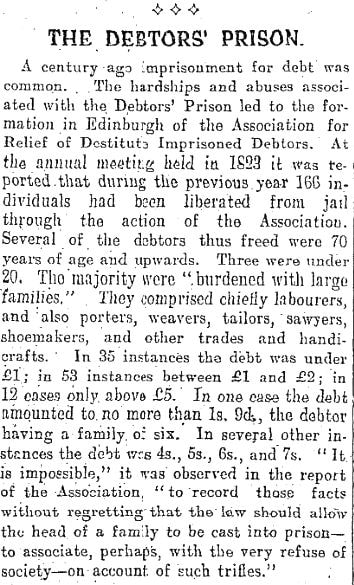
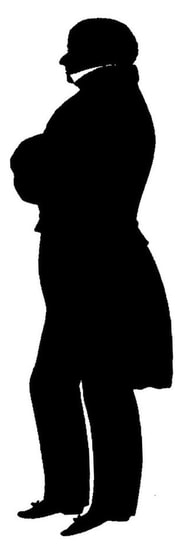
 RSS Feed
RSS Feed
